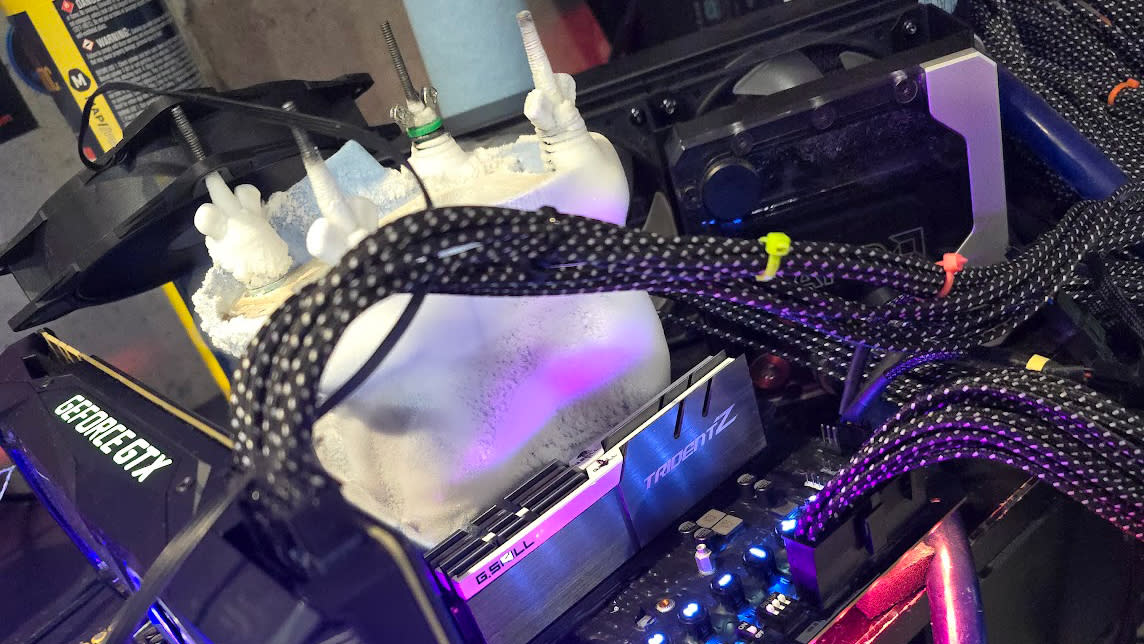Three-year-old CPU beats Intel's fastest current chip in RAM benchmark — 7 GHz Core i9-11900K tops 8.3 GHz Core i9-14900KS in PYPrime 32B

The Core i9-11900K may not be one of the best CPUs anymore, but that doesn't mean the flagship Rocket Lake chip has lost its mojo. Our resident extreme overclocking guru, Allen 'Splave' Golibersuch, has set a new world record with the Core i9-11900K in PyPrime 32B, outperforming the previous record holder, the Core i9-14900KS.
Setting world records isn't just about having the fastest hardware at hand. It helps when chipmakers like AMD or Intel send you trays and trays of processors to find the best sample. However, a lot of preparation work goes into an extreme overclocking endeavor, and finding the best platform for the job is one of them. Despite Intel and most of the hardware world having moved on from Rocket Lake, Splave has discovered that the Intel 500-series platform is probably one of the last low-latency platforms of its kind.
For those who haven't heard of PYPrime, it's an open-source RAM benchmark based on Python that scales with processor and memory overclocking. However, the latter is more important, so Splave beat the previous record set by Korean overclocker safedisk despite the former having an older chip and running at a lower clock speed. Splave's Core i9-11900K was operating at 6,957.82 MHz compared to safedisk's Core i9-14900KS, which was overclocked to 8,374.91 MHz.
With Rocket Lake, Intel introduced gear ratios, a similar approach AMD had taken with its Ryzen processors. As a quick recap, in Gear 1, the processor's memory controller and the memory speed are in sync. Meanwhile, Gear 2 forces the processor's memory controller to run at half the memory speed, so there's a performance hit. Rocket Lake runs DDR4 in Gear 1 and DDR5 in Gear 2 by default. Officially, Rocket Lake can support up to DDR4-3200 in Gear 1, so Splave's Core i9-11900K is a remarkable sample since it can do DDR4-3913.
Unlike other memory benchmarks that favor bandwidth, PYPrime just loves latency. Splave was running DDR4-3913 dual-rank, double-sided memory for interleaving gains. Splave tuned the timings to 12-11-11-18 1T, which are very tight thanks to the Samsung B-die ICs inside the G.Skill Trident Z DDR4-3466 C16 memory kit. For comparison, safedisk was using DDR5-9305 with timings configured to 32-47-42-34 2T. If we do the math, Splave's memory latency is 6.133 ns, up to 11% lower than safedisk's 6.878 ns.
For extra performance gains, Splave set the affinity to the core closest to the processor's integrated memory controller (IMC) and chose Windows 7, which is lightweight and not hindered by mitigations and security patches that newer operating systems and processors require to be safe. The result is Splave dethroning safedisk in PyPrime 32B by 285 ms. It may not seem like a considerable margin, but every last millisecond counts in competitive overclocking.
It's always thrilling to see old hardware beating the latest and greatest. Splave's PyPrime 32B world record pays homage to Rocket Lake and, more importantly, ASRock's Z590 OC Formula, the brand's last unrestrained overclocking motherboard. And while ASRock has tested the waters with the Aqua OC, it's not the same. Fear not overclocking enthusiasts; a little bird has whispered to us that the Formula is returning for Z890 and Core Ultra 200 (Arrow Lake) series that will hit the retail market before the end of the year.

